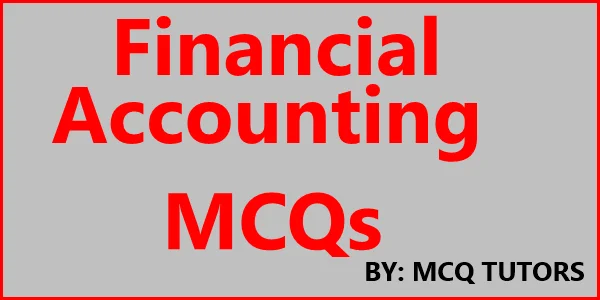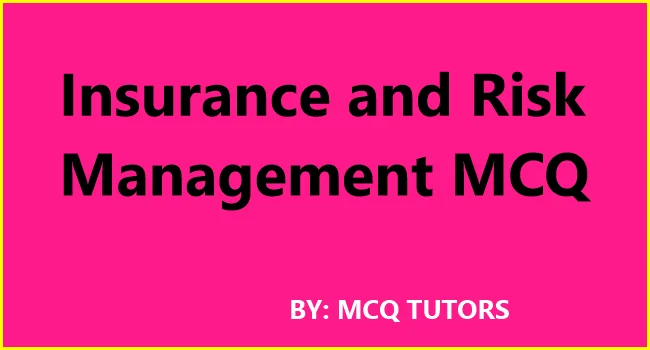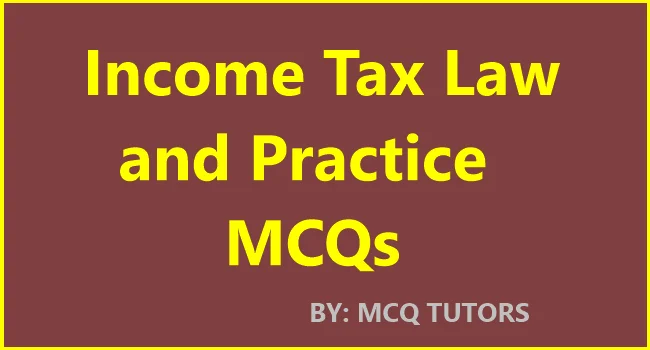Are you looking for MCQ on Bank Management with Answer Download in Pdf? Do you want to find MCQ with the answers in a convenient pdf format?
Look no further! In this article, we provide a comprehensive guide on where to find MCQ with answers related to Bank Management in a downloadable pdf.
We explain how to utilize these resources and what questions you should expect from each source. Read on for more details about finding MCQs with answers ready to download in a convenient pdf format.
100 MCQ on Bank Management with Answer
1. __ and globalisation has lead to major changes in the services provided by banks.
Ans. Liberalisation
2. The discovery of metals and its value lead to the use of metal coins as __.
Ans. Money
3. __ were the pioneers in the discovery of paper money as they were the first to use the same.
Ans. Chinese
4. In India, paper money was issued during Moguls regime in AD _.
a) 1236
b) 1325
c) 1237
d) 1240
Ans. a) 1236
5. The word ‘bank’ is derived from the Italian word __which means bench or counter.
Ans. Banca
6. The development of accounting procedures by the Italians is now popularly known as _.
Ans. Double Entry Bookkeeping
7. The first government bank called as Imperial Bank of India was started in the year _.
a) 1922
b) 1921
c) 1931
d) 1941
Ans. b) 1921
8. __ is the ability of the banker to meet his obligation.
Ans. Liquidity
9. Any leakage of information about the customer through the banker may affect the image and the business of the customer. (True/False).
Ans. True
10. Safety, liquidity, profitability, service quality, and secrecy can be termed as .
Ans. pillars of banking industry
11. __ is the process of linking savers of money with those who are in need of money.
Ans. Intermediation
12. Banks accept deposits from savers and pay them .
Ans. Interest
13. Banks pay interest on deposits according to the _
Ans. market trend
14. __ facilitate movement of money in large volumes from place to place.
Ans. Cheques
15. The deployment of depositor’s money by way of lending and the risk of recovering the money from the borrowers are not taken care of by the bank. (True/False).
Ans. False
16. Banks differ in their business outlook. (True/False).
Ans. True
17. In 1945, the government nationalised the Imperial Bank of India with extensive banking facilities on a large scale, especially in rural and semi-urban areas. (True/False)
Ans. False
18. Capital Adequacy Assessment Process (CAAP) is part of Pillar I of the New Framework. (True/False)
Ans. False
19. The second phase of nationalisation of the Indian banking sector reform was carried out in __ with seven more banks.
Ans. 1980
20. The first phase witnessed periodic failures between 1913 and .
Ans. 1948
21. refers to the degree of efficiency of a process or set of processes.
Ans. Operational efficiency
22. CASA stands for _.
Ans. Current and savings accounts
23. ratio is commonly used by bankers to measure the overall cost effectiveness (or the operational efficiency) of a bank.
Ans. Efficiency
24. benchmarking measures all the inputs of a value chain towards attaining profit.
Ans. Strategic
25. is a process of creating definite strategies in line with the mission or the goal of a bank.
Ans. Business planning
26. A good business plan will begin with an honest and realistic appraisal of the current position of the business. This is known as _.
Ans. Situational analysis
27. PEST/PESTEL analysis is important to understand and predict the behaviour of competitors. (True/False)
Ans. False
28. Competitor analysis helps to identify and analyse trends in the environment. (True/False)
Ans. False
29. __ need to assess the business potential of each and every region/location in order to work out targets for business.
Ans. Banks
30. Assessing the business potential helps the bank in deciding the infra requirement for the branch. (True/False)
Ans. True
31. Assessing the business potential helps the bank in staffing pattern. (True/False)
Ans. True
32. Location of the branch. (True/False)
Ans. False
33. Type of branch, specialised like industrial finance, agricultural finance, housing finance. (True/False)
Ans. False
34. Business location like housing colony, super market, bazaar, industrial belt, agricultural belt, airport, educational institution, etc. (True/False)
Ans. False
35. _ refers to the expenses incurred in carrying out a business process.
Ans. Cost of operation
36. Net Interest Margin = _ minus interest paid on deposits.
Ans. Interest earned on Loans
37. The cost of operation has a direct bearing on the revenue earning capacity of the _.
Ans. Bank.
38. Banks have to ensure that stricter scrutiny of their transactions is carried out as per strictures of .
Ans. Basel II.
39. A centralised operation of a bank therefore assumes importance in increasing the costs and increasing the efficiency. (True/False)
Ans. False
40. The ability of a bank to expand the product offerings in line with its particular business model at a reduced cost will be the key to success. (True/False)
Ans. True
41. _ is a process by which a bank measures the performance of its different business units.
Ans. Transfer Pricing
42. The TP is a balancing factor between taking branch and lending branch.
Ans. Deposit
43. TP is a mechanism to measure the relative contributions of the branches to the bank’s .
Ans. Profitability.
44. Asset liability management is a tool for guiding investment decisions of banks. (True/False)
Ans. True
45. Fixed deposit is an example of low cost deposits. (True/False)
Ans. False
46. Small Industries Development Bank of India (SIDBI) assists large corporate with seed capital and also help in raising financial resources by engaging in sale of debentures of corporate. (True/False)
Ans. True
47. Agricultural cooperative banks also lend against gold ornaments and title deeds of land belonging to farmers for consumption purposes as well as for development purposes such as irrigation works, digging wells, etc. (True/False).
Ans. True
48. Commercial banks accept demand deposits such as savings bank and term deposits such as fixed deposit, recurring deposit, etc. (True/False). Ans. True
49. Foreign exchange banks focus on international payments and settlements, sale and purchase of foreign currency, acting as correspondents for other banks, etc. (True/False).
Ans. True
50. Branches are classified into Category A, B, and C for the purpose of conducting foreign exchange business by RBI. (True/False)
Ans. True
51. Banks have moved to centralised operations to reduce the footfalls in the branch as well as to reduce the cost of operations. (True/False)
Ans. True
52. Regional rural banks are controlled by _ and the parent bank which has promoted the bank.
Ans. RBI
53. The _ sector banks have a classification of new generation and old generation private banks.
Ans. Private
54. An arm of the HO departments function at the controlling offices (Zonal Office and Regional Office) for the effective monitoring and disseminating the objectives, mission, and vision of the __.
Ans. Bank
55. The oldest public sector bank in India having branches all over India and serving the customers for the last _ years is Allahabad Bank.
Ans. 132
56. Banks change their deposit mix in tune with their asset liability management requirements (True/False).
Ans. True
57. A benchmark is the yield on some financial instrument to which the floating interest rate is linked (True/False).
Ans. True
58. Rate of interest on business loans is generally below
Ans. PLR
59. PLR of a bank is determined by .
Ans. Reserve Bank of India
60. Only overdraft facility can be granted for
Ans. Business purposes
61. Consumer loans are less lucrative to banks. (True/False)
Ans. False
62. Consumer loans attract zero percent risk weightage for the purpose of capital adequacy ratio. (True/False)
Ans. False
63. Consumer loans can be extended only to individuals. (True/False)
Ans. True
64. ‘Know Your Customers (KYC)’ norms are not applicable to deposit accounts. (True/False)
Ans. False
65. A bank can accept bulk deposits only with the prior permission of __.
Ans. Reserve Bank India
66. Deposit rates are fixed by the Reserve Bank of India from time to time. (True/False)
Ans. False
67. Marketing aims to satisfy the customer’s needs and wants. (True/False)
Ans. True
68. Each individual working in an organisation is a marketing person. (True/False)
Ans. True
69. Social Objectives of a bank can also be marketed. (True/False)
Ans. True
70. Marketing mix is the same for both products and services. (True/False)
Ans. False
71. Banks products are classified as asset products and liability products in their balance sheet. (True/False)
Ans. False
72. The pricing of bank products is done by the government of India. (True/False)
Ans. False
73. Brands do not matter in banking industry. (True/False)
Ans. False
74. Banks can open branches anywhere in India or abroad on their own accord. (True/False)
Ans. False
75. ATMs are an example of physical evidence. (True/False)
Ans. True
76. The name Imperial bank of India was renamed as State Bank of India in
A.1955
B.1941
C.1950
D.1966
Ans. a
77. Trust is the confidence public repose on a bank in respect of __ of the money deposited by them.
A. Confidence
B. safety
C. Liquidity
D. Profitability
Ans. b
78. __ is the process of linking savers of money to those who are in need of money.
A. Know your customer
B. service
C. Book keeping
D. Intermediation
Ans. d
79. India’s oldest, largest and most successful commercial bank is __.
A. SBI
B. Canara bank
C. Punjab National bank
D. Punjab and Sind Bank
Ans. a
80. The first bank in India to be given an ISO certification
A. Federal Bank
B. Canara bank
C. C. Punjab National bank
D. D. Punjab and Sind Bank
Ans. b
81. is a measure that expresses total operation cost as percentage of operating income
A. Competitors Analysis
B. Situational analysis
C. Efficiency ratio
D. SWOT analysis
Ans. c
82. The process of business planning in Banks are carried out through __ analysis
A. SWOT
B. Sensitive
C. Situational
D. Scenario
Ans. a
83. Banks assess business potentials through setting
A. Cash collection
B. Cash payments
C. Business target
D. Deposit growth
Ans. c
84. Banks are free to determine the rates of interest without reference to their BPLR for the following loan
A. Consumer loans
B. Loan against deposit
C. Agriculture loan
D. Loan against shares
Ans. c
85. Banks have the freedom to offer all loans at fixed or floating rates subject to
A. Credit-deposit ration
B. asset liability management
C. Availability of funds
D. Cost of funds
Ans.
86. Loan availed for Educational purpose is classified as _
A. Term loan
B. Consumer loan
C. Short term loan
D. Educational term loan
Ans. b
87. One of the primary objectives of Relationship marketing is
A. deposit scheme
B. customer retention
C. effective service
D. canvassing deposits
Ans. b
88. Bank’s major direct distribution outlets are their .
A. call centres
B. internet banking
C. Branches
D. Automated teller machine
Ans. c
89. RBI manages the money supply, interest rates and exchange rates through
A. Cash Reserve Ratio
B. Money supply
C. SLR
D. Credit restriction
Ans.
90. Refers to the total value of goods and services produced in the country.
A. GDP
B.CP
C. RBI
D. DIR
Ans. a
91. Real estate loans are domestic, commercial loans secured by__.
A. equitable mortgage
B. real estate
C. registered mortgage
D. plant and machinery
Ans. a
92. Source of non interest income is _
A. interest income
B. interest on deposits
C. Service charges
D. Exchanges & commission
Ans. d
93. Electricity bill incurred by banks is an_
A. other operating expense
B. occupancy expense
C. budget expense
D. maintenance expense
Ans. b
94. Burden is equal to non interest expense minus
A. interest income
B. non interest income
C. Commission
D. Occupancy expense
Ans. b
95. The composition of assets and liabilities and a proper risk assessment is known as__.
A. Risk management
B. Asset Liability management
C. Credit Liability management
D. Interest Risk management
Ans. b
96. Asset Liability Management (ALM) got implemented in India with effect from 1st April __
A.1996,
B.1999,
C.1992
D.1997
Ans. b
97. Asset Liability committee is headed by the bank.
A. Managing Director,
B. Executive Director,
C. General Manager
D. Director
Ans. a
98. LAF means
A. Liquidity Adjustment facility
B. Long Audited Form
C. Liquidity amortize Fund
D. Liquidity Assessment Fund
Ans. a
99. Call money market can be accessed only by __
A. Non Financial institutions,
B. banks,
C. insurance
D. nominated banks
Ans. b
100. Investments are based on the quality assessment provided by
A. RBI,
B. SEBI,
C.CRISIL
D. Lead Bank
Ans. c
You may like to read on Best Cheapest Colleges in the USA for International Students
Conclusion:
MCQ Bank Management is an innovative tool for banks and financial institutions to manage their customers and operations. It provides a user-friendly interface for creating comprehensive customer profiles, managing customer accounts, and automating complex workflows.
Thanks for reading these 100 MCQ on Bank Management with Answer, if you have any query please ask thru comment box.
Read more:




